Discovering 30-Taper Machines
They are now capable of handling many of the jobs traditionally done on larger machines. As this account shows, the development says a lot about what's happening in metalworking right now.
Share




There are many good reasons to go to a major trade show such as last September’s IMTS in Chicago. Shows are a great place to look for the next machine tool your shop needs to buy or to find cutting tools and accessories to make your current machines more productive. Shows are also a great place to find out what the leading trends are and to learn about new thinking that might give smart shops a competitive edge.
At this IMTS 2002, one of the most interesting and unexpected discoveries for me occurred at the Yamazen booth, where I had an opportunity to take a close look at a class of machining centers that hadn’t had my close attention before. Yamazen is the importer for a line of 30-taper machines manufactured by Brother, a global company headquartered in Japan that is best known for automated office equipment, sewing machines, labeling systems and other products for home and industry. Brother began building machine tools 40 years ago to meet needs arising in its own production facilities. It introduced its first 30-taper machine 16 years ago.
As I learned, these machines have evolved over the years. Today, these machines are larger, more rigid, more powerful and faster than before. In fact, thanks to these and other advances, today’s 30-taper machining center is capable of machining many of the workpieces that are usually considered more appropriate for a 40-taper machine. The 30-taper machine, however, has advantages in being more compact, more energy efficient, less costly to tool, easier to maintain and longer lasting.
The 30-taper machining center is now highly suited for the growing number of near net shaped parts being produced for the automotive and other industries. These parts typically feature numerous drilled and tapped holes but also call for face milling, boring and profiling. As near net shaped parts proliferate, 30-taper machines represent the most efficient and effective machining resource for this type of parts.
Trendsetter
Bob Nedler is the sales manager for Brother 30-taper machines at Yamazen. Mr. Nedler, who has worked with these machines for 16 years, considers himself one of the most passionate advocates for this type of machine tool. The enthusiasm and energy he showed at IMTS certainly make this a very credible claim.
Mr. Nedler acknowledges that Brother did not invent the 30-taper machines but says that this company has been a leader in bringing it to its current state of development and in popularizing it for a widening array of applications. As evidence that this trend is gaining momentum, he points to a growing number of machine tool builders who offer 30-taper machines, including Howa, Miyano, Kitamura, Chiron and other prominent machine builders. Builders introducing their first 30-taper models were present at this IMTS.
Mr. Nedler explained that Brother introduced its first CNC 30-taper machines in 1985, having developed these machines for use in its own factories. At the time, progress in die casting processes made it possible to produce castings much closer to their final size and shape. These “near net shaped” castings were attractive because they greatly reduced the amount of machining required to finish the part, thereby reducing production costs. The company began turning to near net shaped parts for many of its own office products and home appliances. The automotive industry, however, was quick to seize this cost-saving opportunity.
In those days, most 30-taper machines were restricted to light-duty machining and secondary operations, especially drilling and tapping holes. Because near net shaped parts did not call for heavy metal removal operations, they readily lent themselves to the capabilities of the 30-taper machine. These high-volume applications represented the majority of 30-taper applications throughout the 1980s and into the mid-1990s.
By then, advances in machine tool technology began to change the picture. Although these developments benefited 40- and 50-taper machines as well, their impact on what the 30-taper machining center could handle was particularly significant.
The 30-Taper Machine Grows Up
The appearance of spindles powered by internal permanent magnets was one of those developments. These spindle motors could provide more torque for their size than those they replaced. They are also cooler running and consume less energy.
Such spindle motors applied to 30-taper machines let them handle heavier machining loads in operations that formerly would have been restricted to larger taper machines. However, because 30-taper machines have inherently less mass and lower inertia, the 30-taper machine can be more responsive, with higher rates of acceleration and deceleration compared to larger machines.
However, to take advantage of more torque and faster moves, a machine tool must make corresponding improvements in rigidity, says Mr. Nedler. To this end, he says, Brother took a lesson from the premier builders of 40-taper machines and applied computerized design techniques to develop a new generation of 30-taper machines with more rigid construction. Using finite element analysis, for example, the company designed single-piece castings to replace weldments in the table, column and bed. These castings were produced in Meehanite, the cast iron with superior vibration damping characteristics.
Other features of these machines also evolved. On some models, the worktable has been enlarged to accommodate 30 by 16 inches of X-Y travel, a work zone that approaches that of many 40-taper machines. To keep non-cutting times at a minimum, the original drum-type automatic tool changer has been retained, although extra pockets have been added (from 10 to 14). However, a swing arm-type changer is available, having a carrousel-type tool magazine that holds as many as 26 tools. This is the type of tool changer common among 40-taper machines.
Cutting Tools Get Better Too
Recent advances in cutting tools and toolholders also favor the ascendancy of the 30-taper machines, Mr. Nedler notes. Improved geometry of drills, taps and end mills allows them to cut more aggressively and take advantage of higher spindle speeds. The latest top-quality toolholders in this size are more rigid and have less runout than previous models. In short, 30-taper tooling is closing the gap with 40-taper tooling.
However, Mr. Nedler is quick to point out that these tooling advances enhance the inherent value of 30-taper machines, most of which revolve around the advantages of having a cutter and holder assembly with lower mass than larger versions. Here is a summary of the points he raises about tooling issues:
- Less mass. Thirty-taper holders and cutting tools generally weigh 2 to 4 pounds, whereas 40-taper versions weigh in at 8 pounds or more. This difference greatly influences the forces involved in axis moves and in acceleration and deceleration rates.
- Lower cost. High quality 30-taper toolholders are generally much less expensive than comparable 40-taper holders of the same quality. A shop moving into 30-taper machining for the first time can expect to invest around $2,000 for the initial tooling package.
- Higher spindle speeds. Because of the lower mass, premium quality 30-taper tooling can operate in the range of 10,000 to 16,000 rpm without additional balancing. In contrast, a 40-taper tool generally requires balancing for operation above 10,000 rpm. But even 30-taper tools must be balanced for Brother’s 30,000-rpm models.
- More rigid. For applications where additional rigidity is a plus (boring of large diameters, for example) Brother offers a spindle interface for HSK A 40 toolholders, which correspond to the BT-30 tapered holder. Other proprietary interfaces such as the Nikken NC5 and the Big Plus are also available. All of these special holders feature full contact on both the taper and the face of the spindle for greater resistance to deflection.
Tops For Tapping
All makers of 30-taper machining centers would most likely agree that holemaking is the premier strength of these machines. It’s what they do best. Above all else, drilling and tapping capability make 30-taper machines ideal for machining so many of the die cast aluminum and light alloy components going into automobiles, small motors, generators, electronic housings and so on.
The ability to generate high quality threaded holes with a high degree of efficiency and reliability may represent the pinnacle of the 30-taper machine’s prowess. Brother, says Mr. Nedler, recognized this fact early, focusing attention on the unique challenges posed by precise tapping operations. Its response was the development of a patented approach to synchronous tapping. In this approach, CNC software monitors Z-axis feeds and automatically makes adjustments to synchronize the spindle precisely with the pitch of the thread. The result, he says, is 95 percent or better thread quality, compared to the 70 percent generally obtained with floating tap holders. Mr. Nedler also states that Brother’s approach should be distinguished from other rigid tapping systems based on monitoring spindle speed. Monitoring the infeed instead, he says, has an advantage because it takes advantage of the higher resolution available in the axis drive feedback system, giving this approach an edge in critical threading application.
Effective synchronous tapping and other specialized functions are contingent on the capabilities of the CNC, but these are not addressed by generic CNC systems, says Mr. Nedler. For this reason, Brother has developed its own control unit with an architecture specifically designed for handling synchronous tapping, high acceleration and deceleration, high rapid traverse speeds and other specialized functions. This architecture, which uses three central processors running in parallel, contrasts with the number-crunching capability required on CNCs applied to high speed machining of molds and dies, where closely spaced points on a contouring toolpath must be processed at high rates.
Not to be overlooked in discussions of holemaking on a 30-taper machine is high pressure coolant delivered through the spindle. Because drilling and tapping operations generally involve small diameter (1/2 inch and under) drills and taps in holes as deep as 10 or more times the diameter, 1,000-psi coolant pressure is highly effective at clearing chips and controlling heat. High pressure coolant makes peck drilling unnecessary, significantly reducing cycle times. High pressure coolant is also proving essential for high speed face milling and other non-holemaking operations.
Job Shop Opportunities
So who should be considering 30-taper machines?
Mr. Nedler sees an opportunity for job shops that want to branch away from the 40-taper mindset. Here’s his assessment on why this is an enticing option:
- Good use of floor space. A 30-taper machine has a footprint about one-third of that for a 40-taper machine. High value. Typical 30-taper machines have a smaller price tag because they are more economical to build. Modular designs also allow builders to achieve production economies.
- Low tooling costs. Tooling packages for 30-taper applications will be 25 to 50 percent below comparable packages for 40-taper work.
- Low ownership and maintenance costs. Most 30-taper machines are less complicated and easier to maintain than larger machines. Energy consumption is lower. With less mass in tools and in machine components, forces are lower all around, translating into less wear and tear on ways, ballscrews, bearings and so on.
- Choice of vendors. Despite his partisanship, Mr. Nedler sees healthy competition as a positive factor in the growth of this technology.
- Strategic diversity. The trend toward outsourcing has dispersed mid- to high-volume production of small- to medium-sized parts outside the traditional supplier base, especially in automotive. Now that the efficiency of high speed CNC machining centers rivals that of highly engineered, dedicated equipment, many job shops are in a position to compete for this work because CNC equipment is more flexible and more affordable. Longer running jobs help even out the ups and downs of other job shop activities.
Although 30-taper machines are likely to prove more appropriate for some jobs until recently only producible on 40-taper machines, most of the new 30-taper applications will not come at the expense of an existing machine tool base. Rather, these applications will represent new growth from the ongoing trend toward parts produced in near net shaped configuration.
As Mr. Nedler sees it, the glory days for 30-taper machines are just now on the horizon.
Related Content
5 Tips for Running a Profitable Aerospace Shop
Aerospace machining is a demanding and competitive sector of manufacturing, but this shop demonstrates five ways to find aerospace success.
Read MoreDN Solutions America Unveils Impressive Chicago Technical Center at IMTS 2024
New tech center is serving as a cutting-edge showroom and a technological hub for advanced machining applications.
Read MoreThe Benefits of In-House Toolmaking
The addition of two larger gantry routers has enabled a maker of rubber belting products to produce more tooling in-house, reducing lead times and costs for itself and its sister facilities.
Read MoreMazak VMC Provides Versatile Machining of Complex Parts
The VC-Ez 20X vertical machining center features a 25-hp 12,000-rpm CAT-40 spindle with a 30-tool-magazine automatic tool changer.
Read MoreRead Next
Registration Now Open for the Precision Machining Technology Show (PMTS) 2025
The precision machining industry’s premier event returns to Cleveland, OH, April 1-3.
Read More5 Rules of Thumb for Buying CNC Machine Tools
Use these tips to carefully plan your machine tool purchases and to avoid regretting your decision later.
Read MoreSetting Up the Building Blocks for a Digital Factory
Woodward Inc. spent over a year developing an API to connect machines to its digital factory. Caron Engineering’s MiConnect has cut most of this process while also granting the shop greater access to machine information.
Read More













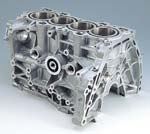
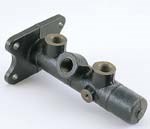
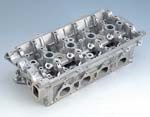


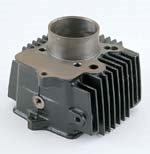
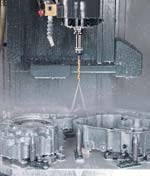
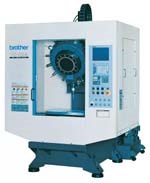








.jpg;maxWidth=300;quality=90)









